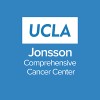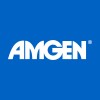
Endobronchial Ultrasound Guided Interstitial Photodynamic Therapy in Treating Patients With Locally...
Locally Advanced Lung CarcinomaNon-Small Cell Lung Carcinoma5 moreThis Phase I/Il studies the side effects of endobronchial ultrasound guided interstitial photodynamic therapy work in treating patients with lung cancer that has spread to nearby tissues or lymph nodes. Photodynamic therapy consists of injecting a light sensitive drug called a photosensitizer, such as porfimer sodium, into the vein, waiting for it to accumulate in the tumor, and then activating it with a red laser light. Giving photodynamic therapy with Porfimer sodium may reduce the tumor size in patients with lung cancer.

Phase II Randomized Trial of Carboplatin+Pemetrexed+Bevacizumab+/- Atezolizumab in Stage IV NSCLC...
Non-Small Cell Carcinoma of LungTNM Stage 4While cigarette smoking remains the primary cause of most lung cancer cases, lung carcinoma in never smokers account for nearly 20 percent of cases. Never smokers with lung cancer typically present with different molecular profiles from that of smokers, which results in prognostic and therapeutic implications. Molecular changes in NSCLC that have therapeutic significance include mutations in the epidermal growth factor receptor (EGFR) and rearrangements in the anaplastic lymphoma kinase (ALK) gene. These driver mutations typically are present in lung tumors found in never or light smokers. The addition of bevacizumab to carboplatin and paclitaxel in first-line treatment of non-squamous NSCLC showed improved survival compared to carboplatin and paclitaxel alone, 12.3 vs. 10.3 months respectively. Results from the POINTBREAK trial demonstrated that carboplatin + pemetrexed + bevacizumab is an alternative option to carboplatin + paclitaxel + bevacizumab, with comparable survival but less toxicity. In recent years, immunotherapy has emerged as a form of treatment that can lead to robust responses in a subset of patients. The PD-1 inhibitor nivolumab and the PD-L1 inhibitor atezolizumab have shown prolonged survival in comparison to docetaxel in patients who previously progressed with chemotherapy, irrespective of PD-L1 expression. Thus, this study combines immunotherapeutic agent atezolozumab with an ant-angiogenic agent, bevacizumab, and double platinum therapy (carboplatin and pemetrexed).

Calypso Guided High Precision Stereotactic Ablative Radiosurgery for Lung TUmours Using Real-Time...
Lung Cancer Stage ILung Cancer Stage II4 moreThis is a single arm seamless phase I/II prospective cohort study. Patients with early stage Non-Small Cell Lung Cancer (T1-T2N0M0) or those with a single pulmonary metastasis of a known malignancy (either following radical treatment or systemic therapy) will be offered participation in this study. Participants will have three tumor locator beacons placed with a flexible bronchoscope in the small bronchial airways in proximity (<3cm) from their lung tumors. These tumor locator beacons will provide real-time positional data and will allow for smaller treatment volumes of Stereotactic Ablative Radiosurgery (SABR) and also allow for a specialized form of treatment delivery known as respiratory gated SABR. This is expected to result in higher precision radiotheapy delivery with less radiotherapy dose to healthy tissues which are in close proximity to the lung tumours.

CCL21-Gene Modified Dendritic Cell Vaccine and Pembrolizumab in Treating Patients With Stage IV...
Lung Non-Small Cell CarcinomaStage IV Lung Cancer AJCC v82 moreThis phase I trial studies the side effects and best dose of autologous dendritic cell-adenovirus CCL21 vaccine (CCL21-gene modified dendritic cell vaccine) combined with intravenous pembrolizumab, and to see how well they work in treating patients with stage IV non-small cell lung cancer. Vaccines made from a gene-modified virus may help the body build an effective immune response to kill tumor cells. Monoclonal antibodies, such as pembrolizumab, may interfere with the ability of tumor cells to grow and spread. Giving CCL21-gene modified dendritic cell vaccine with pembrolizumab may work better in treating patients with stage IV non-small cell lung cancer.

A Study of RGX-104 in Patients With Advanced Lung & Endometrial Cancer
Endometrial CancerEndometrial Cancer Recurrent4 moreStudy RGX-104-001 is a Phase 1, first-in-human, dose escalation and expansion study of RGX-104, an oral small molecule targeting the liver X receptor (LXR), as a single agent and in combination with nivolumab, ipilimumab, docetaxel, or pembrolizumab plus carboplatin/pemetrexed.

CIMAvax Vaccine, Nivolumab, and Pembrolizumab in Treating Patients With Advanced Non-small Cell...
Advanced Head and Neck Squamous Cell CarcinomaLung Non-Small Cell Carcinoma13 moreThis phase I/II trial studies the best dose and side effects of recombinant human EGF-rP64K/montanide ISA 51 vaccine (CIMAvax) and nivolumab and to see how well they work in treating patients with non-small cell lung cancer or squamous head and neck cancer that has spread to other places in the body. Vaccine therapy, such as CIMAvax vaccine may help slow down and stop tumor growth. Immunotherapy with monoclonal antibodies, such as nivolumab and pembrolizumab, may help the body's immune system attack the cancer, and may interfere with the ability of tumor cells to grow and spread. Giving CIMAvax vaccine together with nivolumab or pembrolizumab may work better in treating patients with non-small cell lung cancer or squamous head and neck cancer.

NSCLC Isotoxic Hypofractionated Chemoradiotherapy
CarcinomaNon-Small-Cell LungRadiotherapy plays an important role in non-small cell lung cancer (NSCLC), and concurrent chemoradiation is considered to be the standard treatment for locally advanced NSCLC. However, due to the patient's physical condition, comorbidities and other reasons, only about 1/3 of patients can receive concurrent chemoradiation. Radiotherapy alone or sequential chemoradiation has become the treatment protocol for most patients. Hypofractionated radiotherapy can be used in NSCLC because it can shorten the over treatment time and may potentially reduce the effect of accelerated repopulation and obtain higher biological effective dose(BED). So far, the vast majority of radiotherapy prescriptions have given a uniform dose of 60 Gy. This unified prescription dosage approach is completely inconsistent with the concept of precision treatment. The Netherlands MAASTRO put forward the concept of in silico radiotherapy prescription, that is: the normal tissue limits are uniform, such as: V20% ≤ 30%, spinal cord V0> 45Gy, etc., and each patient receives a different dose of radiation therapy. This radiation prescription could reach the limits of the normal tissue of every patient; if no one tissue limits were reached, the highest dose was set up to 79.2 Gy (1.8 Gy, BID). MAASTRO applied this "iso-toxic" radiotherapy prescription and used accelerated hyperfractionation technology so that each patient received the maximum individualized radiation dose as possible. We will integrate this concept with hypofractionated radiotherapy in order to further improve efficacy.

ELobectomy for NSCLC by VATS Versus Thoracotomy (ECTOP-1007)
CarcinomaNon-Small-Cell LungThis study is one of Eastern Cooperative Thoracic Oncology Projects (ECTOP-1007). The goal of this study is to determine video-assisted thoracoscopic surgery is non-inferior to thoracotomy in terms of disease-free survival for solid clinical stage T1N0M0 NSCLC.

Comparison of Two Techniques of Uniportal VATS Lobectomies for Clinical Stage I Non-Small Cell Lung...
Video Assisted Thoracic Surgery (VATS)Non-Small Cell Lung Cancer (NSCLC)Aim of the study is to compare safety and tolerance of two techniques of Video Assisted Thoracic Surgery (VATS) uniportal lobectomies in the prospective randomized single-institutional trial. One arm is a uniportal lobectomy performed through the transcervical approach with elevation of the sternum, the other arm will utilize a standard uniportal intercostal approache. There will be 10 patients in each group. Patients in clinical stage cI-III (T1-3N0-2M0) Non-Small Cell Lung Cancer (NSCLC). The results will be compared for time of the procedure, number of conversions to multi-portal VATS and/or open thoracotomy, duration and volume of chest drainage, amount of postoperatve pain, time of hospitalization and the number of resected lymph nodes and metastatic nodes. Accrual of patients is planned to complete within 12 months.

Study of Romiplostim for Chemotherapy-induced Thrombocytopenia in Adult Subjects With Non-small...
Chemotherapy-induced ThrombocytopeniaTo evaluate the efficacy of romiplostim for the treatment of CIT in patients receiving chemotherapy for the treatment of NSCLC, ovarian cancer, or breast cancer measured by the ability to administer on-time, full-dose chemotherapy
